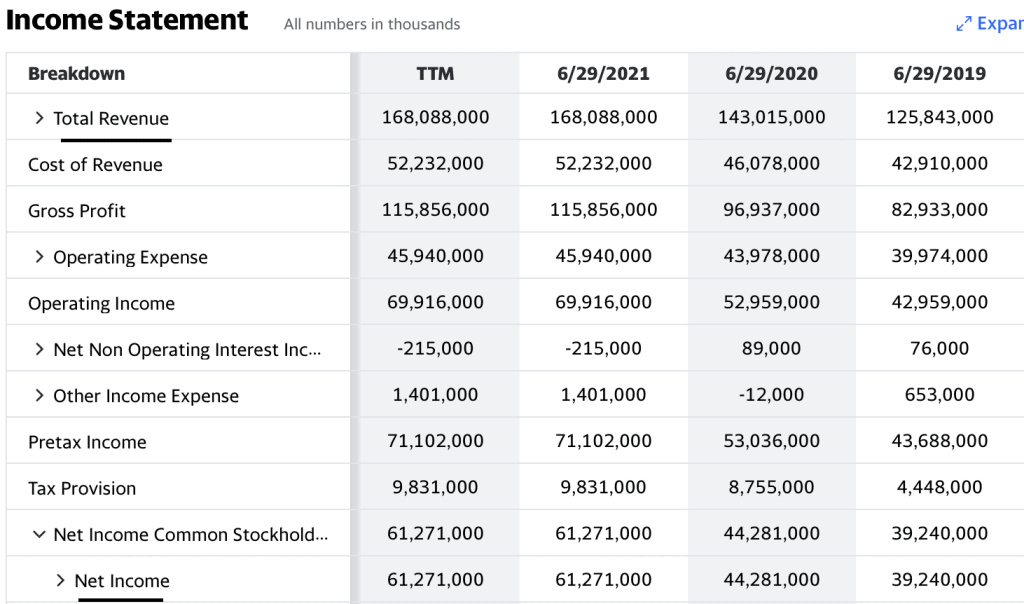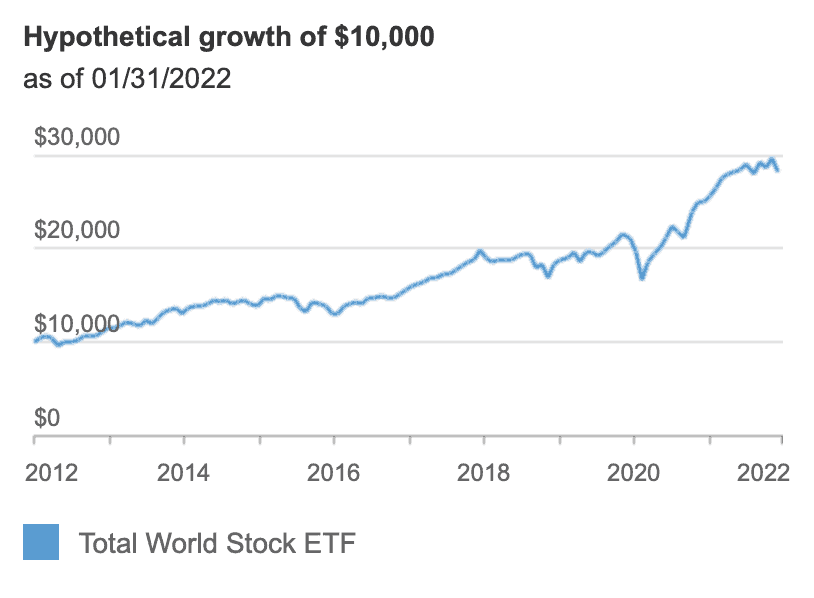Work shapes a third of our lives. If you’re unsure about how to genuinely feel […]
Here's my concise notes after learning about the step by step guide to analyse stocks from Adam Khoo's Piranha Profits Online Investment Course. These are some useful concepts that I jotted down while going through the online modules.
Part 1 | Part 2 | Part 3 | Part 4 | Part 5 | Part 6
Part 1: Great business
- Consistent increase of sales, earnings/net income/net profit and cash flow from operations for the last 5-10 years
- Exception
- Speculative growth companies that may not have profitability yet
- Consistent increase in cash flow does not apply to banks, finance companies, property developers and commodity companies (look at sales and earnings will do)
- Use Yahoo Finance to see the trend for total revenue, net income and cash flows from operations
- Exception

- Positive growth rate
- Look at EPS for the next 5Y (as long as it is positive, it passes the test)
- Use Finviz or Simplywallst
- Sustainable competitive advantage (wide economic moat)
- Only invest in companies with wide moat for the long term.
- Narrow moat companies should only be used for short-medium term speculative investments.
- Examples of wide moat: brand monopoly, economies of scale, barriers to entry, network effect and high switching cost. They allow companies to maintain its pricing power, protect its market share and generate consistent growth in sales, net income and cash flow from operations.
- Technological innovations, patents & pharmaceutical patents are often not sustainable
- Examples of companies with wide moat: Nike, Apple, FB, Amazon, Boeing, Mcdonalds, Yum brands, Tencent, Alibaba, Coca Cola, Alphabet, J&J, 3M, P&G
A long term uptrend (10-20 year chart) is a good visual indication for sustainable competitive advantage
- High and consistent ROE
- ROE=net income after tax (earnings)/shareholders equity
- Tells us for every dollar that the shareholders have invested in the company, how much profit can be generated
- ROE should be consistently >12-15%
- Companies can buy back shares or pay out dividends to reduce Shareholders' Equity, in order to inflate ROE. Be aware of such companies and look at the trend of their net income.
- Some companies like MCD, DPZ and YUM have negative shareholders equity, causing ROE to be negative
- The negative equity is caused by the company taking on cheaper debt ( due to low interest rate) to fund dividend payouts and share buybacks ( liabilities>assets)
- Conservative debt
- Current Ratio >1, =current assets/ current liabilities
- Debt to EBITDA ratio <3, =total debt/EBITDA
- =2 means that the company can take 2 years to pay off its debt, with its profits
- Debt servicing ratio <30%, =net interest expense/CFO*100%
- You would also like the interest coverage ratio to be >3
- Banks, finance companies, property developers and commodity companies tend to be highly leveraged (debt exceeds equity)
Part 2: Great price
You want to buy when the price is below or near fair value. The lower the price to intrinsic value, the lower the margin of safety
We can estimate if a stock is fairly valued using
- PEG ratio
- Company must have increasing and positive net income
- PEG ratio is less than 1.5-1.6
- Intrinsic value
- Discounted cash flow from operations or discounted net income
- Company must have consistently increasing CFO or net income
- Use 20 year discounted net income for wide moat companies
- Price to book ratio
- Banks, real estate developers and reits: PB ratio of 1.2-1.4
- Used for distressed company (loss making). PB ratio less than 0.5
- Price to sales growth ratio
- Used for speculative growth companies with high sales growth and negative profitability
- PSG less than 0.2 is considered undervalued
Part 3: Great point of entry
Price is at a dip of an uptrend or at the support level of a consolidation or reversing into an uptrend
When to buy or sell
Investment strategies recommended
1) Dollar cost average for buy and hold stocks
- Invest a fixed dollar amount at regular intervals
2) Trend following
- Identify trends using moving averages and price action
- Buy when the index starts an uptrend or is making a dip on the uptrend
- Sell when the index reverses into a downtrend
3) Hybrid approach
- Only dollar cost average when price is making a dip on an uptrend or when prce is at the support level of a consolidation
- Avoid DCA when price is on a downtrend trend
General principle: buy when there is a reversal or trend signal
- Buy when the price is at the dip of an uptrend, at the support level of a consolidation, buy at the dip where it bounce off MA support or reversing into new uptrend
- As the share price increase, wait for retracement and buy at the support level
- Avoid buying at the highs of uptrend (far from moving average)
- Avoid buying shares on a downtrend, as the low can go lower
Related article
VTI vs VOO: which index fund is a better investment (updated 2020)
Thank you for reading! Please like my Facebook page to get the latest updates.







